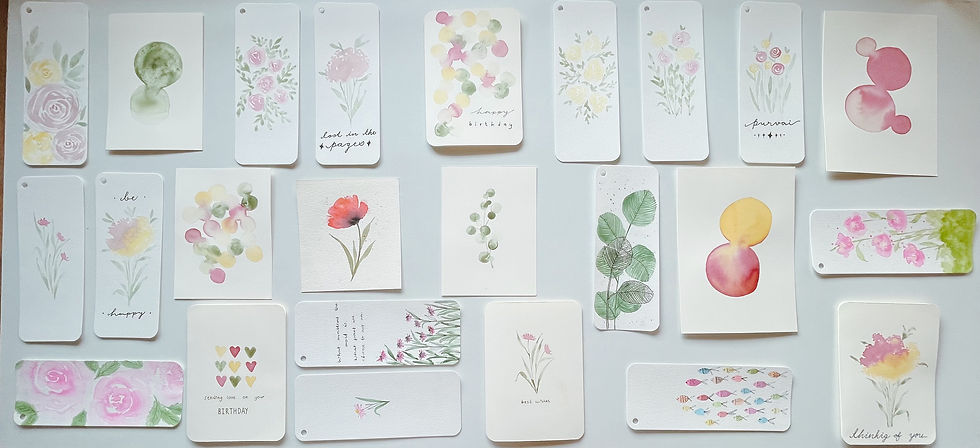Watercolor painting is a beautiful and versatile medium that has been enjoyed by artists for centuries. However, if you're new to watercolors, you may have some questions. In this blog, we'll answer some frequently asked questions about watercolor painting for beginners.

What materials do I need to get started with watercolor painting?
To get started with watercolor painting, you'll need watercolor paper, watercolor paints, brushes, a palette, and water. It's also helpful to have a pencil, eraser, and masking tape for masking areas of your paper.

What type of paper is best for watercolor painting?
Watercolor paper is specially designed for watercolor painting and comes in different weights and textures. It's important to choose a paper that is at least 140 lb or 300 GSM. weight, as lighter papers tend to buckle and warp when wet. The cold-pressed paper has a slightly rough texture, which is ideal for creating texture and blending colors.

What type of brushes should I use for watercolor painting?
Watercolor brushes come in different shapes and sizes and are designed to hold and distribute watercolor paint. The most common types of brushes are round, flat, and mop. It's a good idea to have a variety of brushes in different sizes to suit different painting techniques and subjects.

How do I mix watercolor paints?
To mix watercolor paints, use a palette or mixing tray. Wet your brush and load it with paint, then mix it with water on the palette to achieve the desired consistency and color. It's important to use a clean brush and avoid mixing too many colors together, as this can create muddy colors.

How do I create a watercolor wash?
A watercolor wash is created by applying a layer of watered-down paint to your paper. Wet your brush and load it with paint, then apply a horizontal stroke across your paper, starting at the top and moving down. Rinse your brush and repeat the process, slightly overlapping the previous stroke. Continue until you reach the bottom of the paper.

How do I create texture in my watercolor painting?
Texture can be created in watercolor painting by using different techniques such as dry brush, salt, and splattering. A dry brush involves using a dry brush with a small amount of paint to create a textured effect. Salt can be sprinkled on wet paint to create a speckled effect, while splattering involves flicking paint onto the paper with a toothbrush or other tool.

How do I fix mistakes in my watercolor painting?
Watercolor paint is transparent, which means mistakes can be difficult to fix. However, you can try lifting the paint using a clean, damp brush or sponge, or use masking tape to mask areas of the paper before painting. It's also important to embrace mistakes and use them as an opportunity to learn and grow as an artist.
How do I care for my watercolor brushes?
To care for your watercolor brushes, rinse them thoroughly in water after each use and reshape them with your fingers. Store them upright in a brush holder or lying flat on a towel to dry. Avoid leaving them in water or using harsh chemicals to clean them, as this can damage the bristles.

In conclusion, watercolor painting is a beautiful and rewarding medium that is perfect for beginners. By using the right materials, brushes, and techniques, you can create stunning works of art. Remember to have fun and experiment, and don't be afraid to ask questions or seek guidance from more experienced artists. Happy painting!
Comments